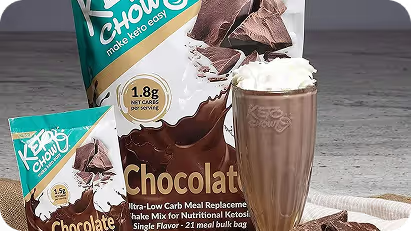The Ultimate Guide To DTC Marketing: Strategies To Increase Your Sales In 2024
Are you an online e-commerce business looking to boost your sales in 2024? This guide has everything you need to master direct-to-consumer (DTC) marketing and grow your e-commerce business. Whether you're an established brand or a solo entrepreneur, this article contains invaluable insights and actionable tips to help you succeed with direct-to-consumer marketing strategies.
What is Direct-to-consumer (DTC) Marketing?
Direct-to-consumer marketing means when a business sells directly to consumers/customers and there are no middlemen involved in the purchase process.
A big advantage of DTC marketing is it gives businesses the ability to understand and connect with their customers. Without intermediaries, businesses can directly collect data and insights on consumer behavior and preferences. This knowledge enables companies to fine-tune their marketing strategies and product offerings to meet the specific needs of their audience.
The Benefits of DTC Marketing for Businesses
Let us see some of the major benefits of DTC Marketing for businesses -
- More Profits: Because there are no middlemen involved in DTC marketing, businesses can significantly reduce their operational costs, leading to higher profit margins on each sale.
- Better Control: With DTC Marketing, companies have the advantage of directly managing prices, promotions, and inventory. This enables them to be not dependent on middlemen and the inefficiencies around them.
- Personal Connections: Selling directly to consumers allows businesses to build a connection with their customers thus making customers feel valued. This relationship is super important in today’s competitive market, as consumers are flooded with options.
- Customer Loyalty: Selling directly to users allows businesses to offer a personalized experience to their customers which enhances customer satisfaction. If you’re running your e-commerce store on platforms like WooCommerce or Shopify, there are third-party loyalty apps and plugins available that will help you create a loyalty program for your customers.
- Flexibility and Speed: The direct communication between the buyer and the customer allows businesses to iterate quickly as per customer needs and current trends. Also, companies can offer better customer service when there are no middlemen involved.
- Brand Building: DTC Marketing plays a crucial role when it comes to brand building. Because now the interactions are direct between the business and the customer making businesses better placed to build a strong brand presence in the market.
- Data Insights: Direct interactions with customers result in massive valuable data sets that can be utilized to understand customer behavior and tune marketing strategies accordingly.

Latest trends and stats around DTC Marketing
According to this article by Drip, DTC brands comprise approximately 13 percent of all ecommerce businesses in the US. Moreover, it is estimated that there are approximately 110,000 - 120,000 DTC companies in the US. By comparison, there are around 800,000 ecommerce sites.
Also in 2024, there are some trends around DTC Marketing. To keep up with the market trends, it’s crucial to understand the landscape and identify emerging opportunities and create your strategies accordingly.
Here are some common DTC marketing trends in 2024:
- Boom in Social Shopping: Platforms like Instagram and TikTok have become major shopping spots, especially for the young. People are spending a lot of time on the channels and businesses are leveraging these platforms to make their brand discoverable and make shopping fast and easy.
- Inclination towards sustainability: Customers value brands that prioritize environmental responsibility and ethical behavior. Brands that show some commitment to these values not only distinguish themselves in the market but also build a strong emotional connection with their audience.
- Capitalizing on Reviews: Customers are more likely to trust your brand when they see other customers sharing their good experiences of buying from you. Businesses are using reviews and customer posts as promotions - that make customers feel more confident about choosing their products.
Developing a DTC Marketing Strategy
Now that we understand the basics of DTC Marketing, it's time to discuss developing a DTC Marketing strategy. A good plan for selling directly to customers will help us focus our efforts to make sure we're marketing to the right people in the right way.
- Identifying the target audience for DTC Marketing
Before we start with our marketing, it is super important to understand who we’re trying to reach and who will be the customers of our products/services. We have to understand their demographic details, interests - their likes and dislikes, what are the problems that they are facing, etc. Based on this information we have to create customer profiles.
You can use data management platforms to understand the purchase patterns and interest details of your target customers. Instead of just focusing on where to advertise or what product to push, think about the people you're selling to first. Look at things like what they buy, how they surf the web, and their past purchases.. This approach makes sure your marketing efforts are just right for your customers' needs and habits.
- Choosing the right DTC Marketing channels
In 2024, there are more channels than ever to reach out to your target customers. Unlike before, consumers are spending more time on digital platforms and the engagement rate for channels like Instagram and TikTok is super high. Moreover, these channels have immense user data that allows you to fine-tune your targeting to the people who are most likely to purchase your products.
Other than conventional advertising, influencer marketing is something that has seen exponential growth in recent years.
Try to find influencers whose values mirror your brand's identity, and the ones that are creating content directly or indirectly related to the problem that your product is solving.
- Creating content that resonates with your audience
In direct-to-consumer marketing, your content is extremely important as it sets and defines your brand tone and identity.
Crafting a content plan that speaks to your audience and highlights what's special about your brand is the key to connecting with your target audience.
This could mean writing blog posts, making videos, or posting on social media. Your content should be compelling, educational, and true to your brand's personality. Remember to use keywords that are relevant to your industry to boost your visibility in search results, and make sure your content is optimized to look good on phones.
- Using Emails and SMSs effectively in your DTC Marketing strategy
Email and SMS marketing is a powerful tool for boosting sales and communicating directly with customers. A strategic approach involves capturing email addresses through website pop-ups by giving them discount coupons once they sign up or by asking them to sign up for your newsletter. This initial step lays the foundation for building a valuable contact list.
Personalizing the content of the emails or your SMS is super important to make them resonate with the recipients. By tailoring content to individual users, businesses can build a sense of value and loyalty among their audience. This personalized approach enhances the effectiveness of email campaigns and strengthens the bond between the brand and its customers.
Also, setting up automated emails for key actions, such as welcoming new subscribers or reminding customers about abandoned carts, ensures timely and consistent engagement. It is also important to have clear calls-to-actions so that the readers exactly know what they are supposed to do next. By this you can create a great user experience and increase conversions.
- Running Digital Campaigns
To get more people to notice and buy from you, it's important to advertise more for direct-to-consumer (DTC) marketing. Digital ads on platforms like Google, Facebook, Instagram, Tiktok, Twitter are a good way to do this and reach your target audience.
Most of the digital platforms today offer advanced levels of targeting options. From basic demographic filters like age, location, devices to advanced filters like behaviors, interests, etc. you can reach out to people who are looking for products/services like yours. In addition to leveraging social platforms, incorporating a PPC strategy through a specialized agency like Velocity PPC agency can further enhance your visibility and drive conversions. By carefully crafting PPC campaigns, businesses can attract highly targeted traffic to their sites, increasing the chances of conversion and maximizing ROI.
You can see how well your ads are doing in real-time and change them if needed. This helps you make better decisions about what ads work best. By always checking and trying new things with your ads, you can make them better and sell more stuff to people who are interested.
Tips to make users take more actions on your e-commerce store
Your E-commerce website is the most important part of your DTC Marketing strategies because that’s the place where users will take action and decide to buy or not buy your products.
For a profitable business, it becomes crucial to have an E-Commerce website that compels people to take action and purchase products. Let’s see some ways to enhance the performance of your DTC Marketing website.
- Make simple navigation - When creating the ECommerce website, ensure that your website is easy to navigate and has a search function. A user-friendly interface will encourage visitors to explore more products and will increase the chances of them purchasing from you.
- Optimize the site for mobile: With an increasing number of users shopping on their smartphones, your website must be optimized for mobile. A seamless mobile experience can significantly increase the likelihood of purchases and interactions.
- Use High-Quality Images and Videos: Visuals and images play a crucial role in online shopping. High-resolution images and engaging videos of your products can entice users to take action by giving them a closer look at the product that they're considering buying.
- Include social proofs - Use reviews, ratings, and testimonials prominently on your site as positive feedback from other customers will build trust and encourage new visitors to make purchases.
- Offer Limited-Time Promotions: When you create time-sensitive offers, it creates a sense of urgency and compels the user to purchase at that moment. For example, adding a countdown timer to the checkout page can urge customers to complete checkout faster by creating FOMO with a limited-time discount offer.
- Implement Clear Call-to-Actions (CTAs): Use compelling and clear CTAs throughout your site. Whether it's "Add to Cart," "Buy Now” or "Learn More," make sure each CTA is straightforward and not confusing.
- Personalize the Shopping Experience: Use data analytics to offer personalized product recommendations based on a user's browsing and purchase history. Personalization can enhance the user experience and increase the likelihood of repeat visits and purchases.
A great way to incorporate many of these strategies is using a popup tool like Alia. Alia allows you to educate customers more effectively once they land on your e-commerce store and then reward them for learning with a limited-time promotion in an engaging, personalized way. Tools like Alia are a great way to enhance your site experience and ultimately convert more shoppers.
Conclusion
So, that wraps up our guide on Direct-to-Consumer (DTC) marketing strategies for 2024. We've covered the basics of DTC marketing, its benefits, and strategies that could help your E-commerce business grow. The key takeaway is to focus on building a strong, direct connection with your customers.
While running the DTC business, make sure your online presence is easy to navigate and communicate directly with your audience through email marketing to keep things personal to connect with people on a personal level and increase sales and customer loyalty.
By improving your website you can increase conversion and by using social media regularly, you can be on top of your customer’s mind.
Put these DTC Marketing strategies into practice, and you’re setting your business up for a successful 2024 with loyal customers and better sales.
Table of contents























.png)







.png)






































